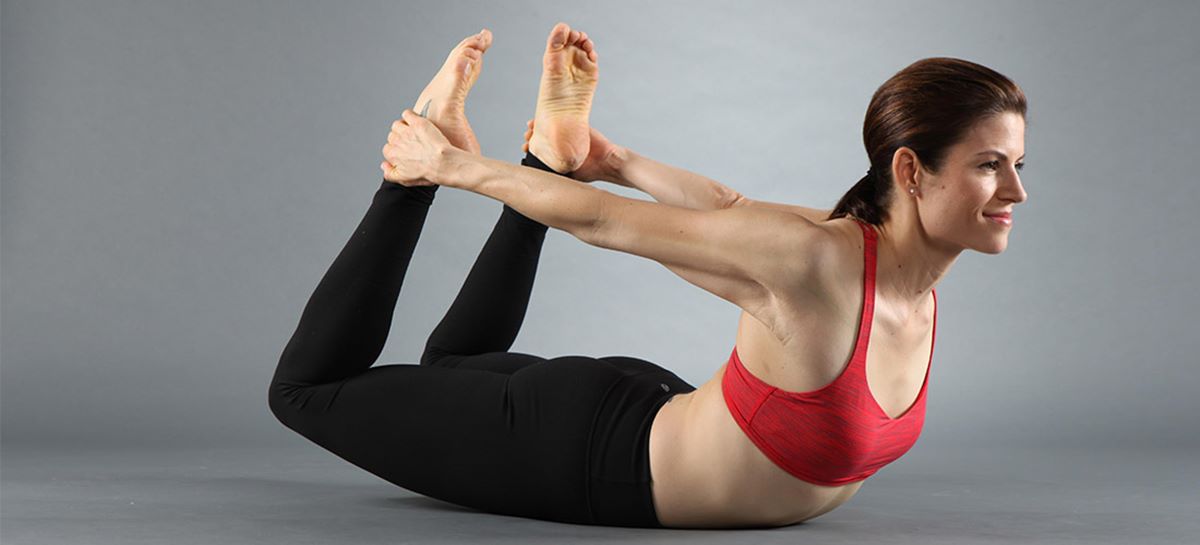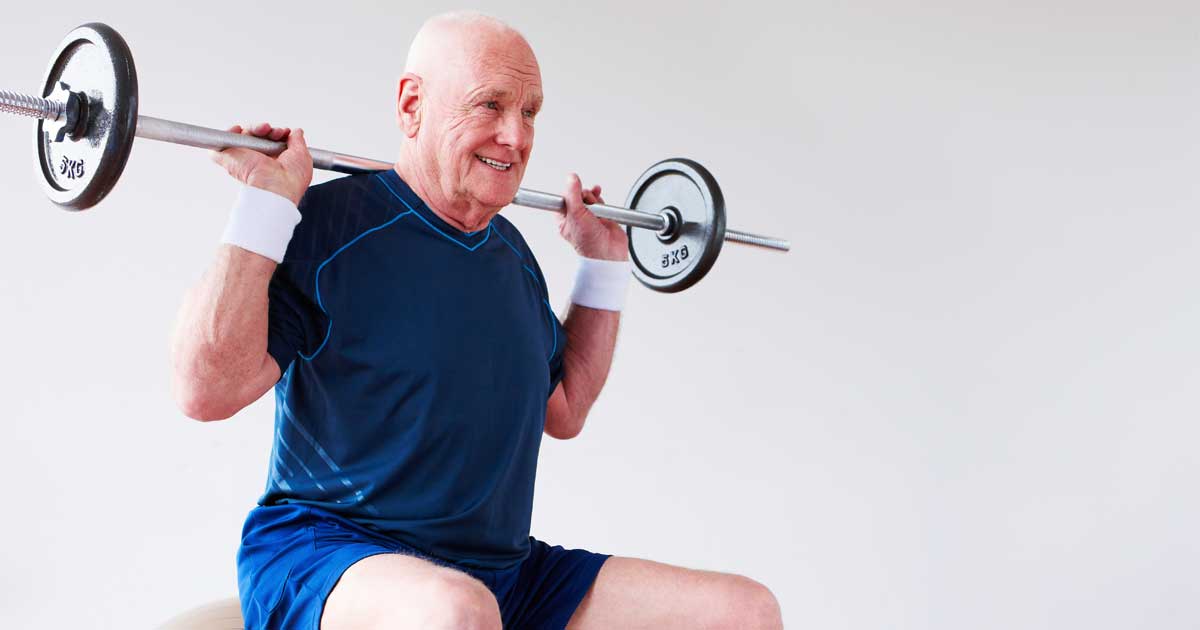

Featured
What Exercise Helps With Constipation
Published: September 29, 2023
Discover the featured exercise that helps with constipation and promotes healthy digestion. Learn how to relieve discomfort naturally and improve your overall well-being.
Introduction
Welcome to our article on how exercise can help with constipation! If you have ever experienced the discomfort and frustration of constipation, you know how important it is to find effective ways to relieve it. While there are various methods available, exercise is a natural and beneficial approach that can provide relief.
Constipation is a common digestive issue that affects people of all ages. It is characterized by infrequent bowel movements, difficulty passing stools, and feelings of bloating or discomfort. It can be caused by a variety of factors, including a lack of dietary fiber, dehydration, stress, and a sedentary lifestyle.
When it comes to treating constipation, many people turn to laxatives or over-the-counter remedies. While these can provide temporary relief, they do not address the underlying cause of the problem. This is where exercise comes in.
Exercise has long been recognized as a beneficial activity for overall health and well-being. Not only does it improve cardiovascular fitness and help maintain a healthy weight, but it also plays a vital role in promoting regular bowel movements and preventing constipation.
In this article, we will explore the relationship between exercise and constipation. We will discuss the types of exercises that are particularly helpful in relieving constipation, as well as the numerous benefits that exercise can have on your digestive system. We will also provide some practical tips on how to incorporate exercise into your daily routine.
So, if you’re ready to discover how exercise can be a powerful tool in the fight against constipation, let’s dive in and explore this topic further!
Understanding Constipation
Before we dive into how exercise can help with constipation, let’s take a moment to understand what constipation is and what causes it.
Constipation occurs when the stool becomes hard, dry, and difficult to pass. It is characterized by infrequent bowel movements, typically less than three times a week. Common symptoms include straining during bowel movements, a feeling of incomplete evacuation, and abdominal discomfort.
There are several factors that can contribute to constipation:
- Dietary Factors: A lack of dietary fiber is a common cause of constipation. Fiber helps add bulk to the stool, making it easier to pass through the digestive system. Inadequate fluid intake can also contribute to constipation.
- Sedentary Lifestyle: Lack of physical activity can slow down the movement of stool through the intestines, leading to constipation. Sitting for long periods, such as during desk jobs or extended periods of bed rest, can worsen the condition.
- Medications: Certain medications, such as certain painkillers, antidepressants, and iron supplements, can have constipation as a side effect.
- Medical Conditions: Conditions like irritable bowel syndrome (IBS), hypothyroidism, and diabetes can contribute to chronic constipation.
- Stress: High levels of stress can affect digestion and contribute to constipation.
It’s important to note that occasional bouts of constipation are normal and usually resolve on their own. However, chronic or recurrent constipation should be addressed to prevent further complications.
Now that we have a better understanding of what constipation is and what can cause it, let’s explore how exercise can play a role in managing and alleviating this common digestive issue.
The Relationship Between Exercise and Constipation
Exercise and constipation may seem like unrelated topics, but in reality, they are closely intertwined. Engaging in regular physical activity has a positive impact on the digestive system, including improving bowel movements and reducing the risk of constipation.
When you exercise, your muscles, including those in your abdomen, become engaged and active. This increased muscle movement helps stimulate the natural contractions of the intestines, known as peristalsis. Peristalsis propels food waste through the digestive tract and ultimately promotes more regular bowel movements.
Additionally, exercise has been found to increase the metabolic rate, or the rate at which the body converts food into energy. This can help enhance the overall efficiency of the digestive process, allowing for smoother digestion and better elimination of waste products.
Furthermore, physical activity has been shown to reduce stress levels, which can be a contributing factor to constipation. Stress and anxiety can disrupt the normal functioning of the digestive system, leading to irregularities in bowel movements. Exercise acts as a natural stress relief, promoting relaxation and helping to regulate the digestive process.
The type and intensity of exercise can also have an impact on constipation. While any form of physical activity can be beneficial, certain types of exercises can be particularly effective in aiding digestion and preventing constipation.
Overall, the relationship between exercise and constipation is a positive one. Engaging in regular physical activity not only benefits your overall health but also supports a healthy digestive system and helps alleviate constipation.
Types of Exercise That Can Help with Constipation
When it comes to combatting constipation, not all exercises are created equal. While any form of physical activity can have benefits, certain types of exercises are particularly effective in relieving constipation and promoting regular bowel movements.
Aerobic Exercises: Activities that get your heart rate up and increase your breathing, such as brisk walking, jogging, cycling, swimming, or dancing, can stimulate the muscles in your abdomen and intestines. This stimulation helps promote bowel movements and alleviate constipation.
Yoga: The combination of stretching, twisting, and deep breathing in yoga can help stimulate the digestive system and improve bowel regularity. Specific yoga poses, such as the Wind-Relieving Pose (Pawanmuktasana) and the Seated Spinal Twist (Ardha Matsyendrasana), can be particularly beneficial in relieving constipation.
Pilates: Pilates focuses on strengthening the core muscles, including those in the abdomen, which can help improve digestion and relieve constipation. It also emphasizes proper breathing techniques, which aid in relaxing the body and promoting healthy bowel movements.
Abdominal Exercises: Targeted exercises that engage the abdominal muscles, such as crunches, planks, or leg raises, can help stimulate digestion and alleviate constipation. These exercises work to strengthen the muscles in your core and promote healthy bowel movements.
Cardiovascular Exercises: High-intensity cardio exercises, such as running or cycling, can stimulate the body’s natural peristaltic movements, helping to move waste through the digestive system more efficiently. Additionally, cardiovascular exercises elevate heart rate and metabolism, promoting overall digestive health.
Pranayama: Pranayama, or yogic breathing exercises, can help regulate the nervous system and reduce stress levels, which can be a contributing factor to constipation. Techniques such as diaphragmatic breathing and alternate nostril breathing can help relax the body and promote healthy digestion.
Remember that it’s essential to choose exercises that you enjoy and that fit your fitness level. Consistency is key, so aim for at least 30 minutes of moderate-intensity exercise most days of the week to experience the digestive benefits.
Now that we have explored the types of exercises that can help with constipation, let’s delve into the many benefits of exercise for maintaining a healthy digestive system.
Benefits of Exercise for Constipation
Engaging in regular exercise not only improves overall health and well-being, but it also offers numerous benefits specifically related to relieving constipation and promoting a healthy digestive system.
Improved Bowel Function: Exercise stimulates the muscles in your abdomen and intestines, promoting more frequent and regular bowel movements. This can help alleviate constipation and prevent future episodes.
Increased Intestinal Contractions: Physical activity triggers the natural contractions of the intestines, known as peristalsis. These contractions help move waste through the digestive system and prevent it from becoming stagnant, reducing the risk of constipation.
Enhanced Metabolism: Regular exercise increases your metabolic rate, allowing for more efficient digestion and elimination of waste products from your body. This can help prevent the buildup of toxins and waste material in the intestines, reducing the likelihood of constipation.
Reduced Stress: Exercise is a natural stress reliever and can help reduce anxiety levels. Stress and anxiety can disrupt the normal functioning of the digestive system, leading to constipation. By managing stress through exercise, you can ensure a healthier digestive system.
Improved Blood Flow: Exercise improves circulation throughout the body, including the digestive system. This increased blood flow helps nourish the digestive organs and enhances their overall function, promoting regular bowel movements.
Weight Management: Maintaining a healthy weight through exercise can reduce the risk of constipation. Obesity is often associated with digestive issues, including constipation. Regular physical activity helps manage weight and support optimal digestive health.
Increase in Water Intake: When you exercise, you are more likely to stay hydrated, as proper hydration is crucial for optimal performance. Drinking an adequate amount of water helps soften the stool, making it easier to pass and reducing the chances of constipation.
Promotion of Overall Digestive Health: Exercise supports the overall health of your digestive system by improving the balance of gut bacteria, enhancing nutrient absorption, and reducing inflammation in the digestive tract. These factors contribute to healthy bowel movements and prevent constipation.
It’s important to note that the benefits of exercise for constipation are not immediate. Consistency is key, and regular physical activity should be incorporated into your lifestyle for long-term results.
Now that we have explored the benefits of exercise for constipation, let’s move on to some practical tips on how to incorporate exercise into your daily routine.
Tips for Incorporating Exercise into Your Routine
Starting and maintaining an exercise routine can sometimes be challenging, but with a few practical tips, you can easily incorporate exercise into your daily routine and reap the benefits for your digestive health and constipation relief.
1. Start Slowly: If you’re new to exercise or have been sedentary for a while, it’s important to start slowly and gradually increase the intensity and duration of your workouts. Begin with shorter sessions and lower intensity exercises, then gradually build up as your fitness improves.
2. Set Realistic Goals: Instead of aiming for lofty exercise goals right from the start, set realistic and achievable goals. Start with small targets, such as walking for 30 minutes a day, then gradually increase the difficulty as you progress.
3. Find Activities You Enjoy: Choose exercises that you genuinely enjoy doing. Whether it’s dancing, hiking, swimming, or playing a sport, finding activities that you enjoy will make it easier to stay motivated and consistent in your routine.
4. Make it a Habit: Consistency is key when it comes to reaping the benefits of exercise for constipation relief. Try to schedule your workouts at the same time each day to establish a regular exercise routine.
5. Mix it Up: Variety is not only beneficial for maintaining interest and motivation but also for engaging different muscle groups. Incorporate a mix of aerobic exercises, strength training, and flexibility exercises to get a well-rounded workout.
6. Get Support: If you find it challenging to stay motivated on your own, consider finding an exercise buddy or joining a group fitness class. Having someone to exercise with can make the experience more enjoyable and help keep you accountable.
7. Make Use of Technology: Utilize fitness apps, smartwatches, or fitness trackers to track your progress, set goals, and monitor your activity level. These tools can provide valuable feedback and help you stay motivated.
8. Sneak in Exercise Throughout the Day: If finding dedicated exercise time is difficult, try to incorporate physical activity into your daily routine. Take the stairs instead of the elevator, walk or bike to work, or have short bursts of exercise during TV commercial breaks.
9. Listen to Your Body: Pay attention to your body and take rest days when needed. Overexertion can lead to injury or burnout, so it’s essential to find a balance between pushing yourself and giving your body the rest it needs.
10. Stay Hydrated: Remember to drink plenty of water before, during, and after your workouts to stay hydrated. Proper hydration helps maintain optimal digestion and prevents constipation.
By following these tips, you can make exercise a regular part of your routine and experience the digestive benefits it offers, including relief from constipation.
Now that we have explored various tips to incorporate exercise into your routine, it’s important to remember that seeking medical advice is essential if you have underlying health conditions or if your constipation persists.
Conclusion
Incorporating regular exercise into your routine can have significant benefits for managing and relieving constipation. By understanding the relationship between exercise and constipation, you can make informed choices to support your digestive health and overall well-being.
Exercise helps stimulate the muscles in your abdomen and promotes the natural contractions of the intestines, facilitating regular bowel movements. It also reduces stress levels, improves blood flow to the digestive system, and enhances the overall efficiency of digestion.
Different types of exercises, such as aerobic exercises, yoga, Pilates, abdominal exercises, and cardiovascular exercises, can have specific benefits for constipation relief. Finding activities that you enjoy and can consistently incorporate into your routine is key to experiencing long-term benefits.
In addition to relieving constipation, exercise offers a range of other benefits for your digestive health, including improved bowel function, increased intestinal contractions, enhanced metabolism, reduced stress, weight management, increased water intake, and overall promotion of digestive health.
Remember to start slowly, set realistic goals, and listen to your body to avoid overexertion. Consistency is key, so aim for regular exercise sessions and make it a habit. By incorporating exercise into your daily routine and following the tips provided, you can improve your digestive health and reduce the occurrence of constipation.
However, it is important to consult with a healthcare professional if you have underlying health conditions or if your constipation persists. They can provide personalized advice and recommendations to suit your specific needs.
So, why wait? Start incorporating exercise into your routine today and experience the positive impact it can have on your digestive health and overall well-being.









